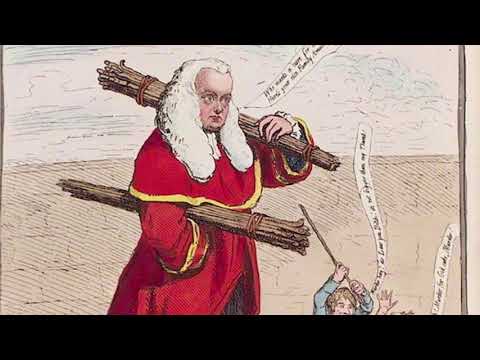The Early Roots of the Rule of Thumb Origin
The phrase “rule of thumb origin” has long been embedded in our everyday lexicon, but the origins of this expression have garnered a myriad of interpretations and a fair share of controversies. To delve into its fascinating historical roots, it’s imperative to trace the phrase back to early craftsmanship, particularly in carpentry. In the 17th and 18th centuries, craftsmen often used their thumbs as a rough measurement tool, roughly equivalent to the width of one inch.
One of the earliest documented uses of “rule of thumb” can be found in a mid-17th-century English text by preacher James Durham. In a posthumous collection of his sermons from 1685, he writes, “Many profest Christians are like to foolish builders, who build by guess, and by rule of thumb (as we use to speak), and not by Square and Rule.” This phrase metaphorically implied a general principle derived from experience or common sense, which was essential in a pre-industrial era that lacked standardized measurement tools.

Debunking Myths: The Legal Misinterpretation of Rule of Thumb Origin
An often cited, yet debunked, origin story links the “rule of thumb” to a supposed archaic English law that allowed a man to beat his wife with a stick no thicker than his thumb. This myth, popularized in the late 20th century, has no basis in historical legal texts. Historians, including Joy Wiltenburg and Philip Jenkins, have dismissed this claim after thorough investigation, pointing out the dearth of legal evidence for such a law. This erroneous attribution surfaced more as a modern folklore, possibly amplified by the feminist movement to highlight domestic abuse issues rather than a true historical account.

Linguistic Evolution: How the Rule of Thumb Origin Adapted Over Centuries
As we chart the phrase’s evolution in literature and common parlance, the shifting semantics are remarkable. By the late 19th century, “rule of thumb” began to encompass broader meanings, including rules based on experience rather than theory. This semantic shift can be seen in engineering principles, such as designing systems or mechanisms with simplified guidelines derived from practical fieldwork rather than purely theoretical models.
For instance, Thomas Edison famously utilized rule-of-thumb methods in his laboratories, applying empirical observations to innovate technologies like the electric light bulb. Edison’s pragmatic approach epitomized the utility and flexibility embedded in the phrase’s historical trajectory.

Rule of Thumb in Modern Usage: From Kitchen to Business Practices
In contemporary society, the rule of thumb extends beyond its original connotations, finding applications in diverse fields. Culinary experts like Julia Child frequently advocate for rule-of-thumb techniques in cooking, emphasizing intuitive methods over rigid recipes. Business leaders also seek heuristic tools for decision-making processes. A standout example is Warren Buffett’s investment rule of thumb: buy stocks only from companies you’d be comfortable holding even if the market shut down for ten years.
This heuristic thinking aligns with cognitive psychology research by Herbert Simon and Daniel Kahneman, highlighting the effectiveness of simple rules or “bounded rationality” in complex decision-making environments.
A Unifying Thread: Cultural Perceptions and Rule of Thumb Origin
Across cultures, equivalents to the rule of thumb abound, showing both the universality and variability of heuristic principles. In Japanese culture, the term “santei” (rough estimation) serves a similar purpose, rooted in practical experience over exact calculation. Meanwhile, in German, “Pi mal Daumen” (pi by thumb) conveys a nearly identical sentiment of approximate assessment.
These cultural iterations embody the same essence: a reliance on empirical knowledge to solve ambiguous or unstructured problems, underscoring human adaptability and intuitive reasoning across different contexts.
Innovation Through Heuristic Approaches: A Case Study
Examining real-life applications, let’s consider Elon Musk’s SpaceX development philosophy. Musk’s iterative design process frequently leans on rule-of-thumb principles for rapid prototyping and testing. By repeatedly refining designs based on empirical results rather than exhaustive theoretical modeling, SpaceX has revolutionized rocketry with breakthroughs like the reusable Falcon rockets. This method showcases rule-of-thumb utility in advancing cutting-edge technologies.
Reflections on the Enduring Nature of Rule of Thumb
In examining the historical channels and varying applications of the “rule of thumb origin,” what stands out is its enduring nature and adaptability. This phrase symbolizes more than just empirical guidelines; it represents a bridge between rigid technical precision and fluid human intuition. Its historical roots, debunked myths, and evolving uses mirror our collective journey in mastering the balance between the known and the unknown, the precise and the approximate.
Understanding the “rule of thumb” in its true historical and cultural contexts enriches our appreciation for this common phrase and underscores its impact on various facets of real-world problem-solving and decision-making. As we continue to rely on these heuristic principles, they will undoubtedly evolve, reflecting ongoing advancements and cultural shifts, yet remain a testament to the enduring wisdom of experiential learning.
Engaged in a continuous loop of reinvention and practicality, the rule of thumb remains an ever-relevant testament to human ingenuity and the timeless power of experiential knowledge. Whether in the kitchen, the laboratory, or the boardroom, this phrase continues to guide us with an age-old wisdom that transcends generational and cultural boundaries.

| Aspect | Details |
| First Appearance in Print | 1685, in a posthumous collection of sermons by James Durham. The phrase used: “rule of thumb (as we use to speak), and not by Square and Rule.” |
| Definition | 1. A method based on experience and common sense. |
| 2. A general principle that is roughly correct. | |
| Origin Hypotheses | 1. Refers to using the tip of the thumb as a unit of measurement, a method convenient yet inexact. |
| 2. Attributed to 18th-century English judge Sir Francis Buller, though this is widely debated and considered inaccurate. | |
| Modern Usage | Used as a general principle providing practical instructions for tasks, trusted through experience and practice rather than scientific research or formal theory. |
| Examples of Usage | – “The general rule of thumb is between 10,000 and 100,000 write/erase cycles per drive.” |
| – Applied in various fields, from construction to technology, indicating a broadly accepted practice or guideline. |
Useful Resources:

Bookmark this engaging journey through time, and don’t miss out on more insightful historical explorations on Baltimore Examiner.
Rule of Thumb Origin: Fascinating Historical Roots
Ever wondered where the phrase “rule of thumb” comes from? Its origins are quite the head-scratcher. Contrary to common belief, it doesn’t stem from anything harsh like the supposed guideline for spousal abuse in old English law. Instead, it seems to have a more practical and less sinister start. Let’s unravel this bit of history.
Practicality Through Ages
Interestingly, the phrase “rule of thumb” likely originated in carpentry. Carpenters used their thumbs as a rough guide for measurements – it’s a pretty handy way (pun intended) to measure short lengths without needing extra tools. Back then, precision wasn’t always the name of the game. For example, when baking or cooking, mothers often measured ingredients by feel and touch, creating recipes handed down through generations – it’s their own kind of healing For Mothers. This intuitive approach has seeped into various facets of daily life, bringing a sense of simplicity and adaptability.
Surprising Connections
You might be surprised by the diverse applications of the rule of thumb. Farmers have long used their thumbs to gauge seed planting depth, ensuring crops’ healthy growth. It even trickles into modern daily errands, like estimating mortgage life insurance needs to secure your home’s future. In the end, it’s all about making those educated guesses that often prove quite accurate.
From Humble Beginnings
In today’s digital age, we might rely more on precise tools like mortgage loan payment Calculators, but the essence of the rule of thumb remains alive in our lives. It’s all about using what you have on hand to solve problems efficiently. Even something seemingly as quirky as the invention of Sour Patch kids cereal probably started with some creative experimentation and a bit of thumb-rule logic.
So next time you estimate something on the fly, remember, you’re tapping into an age-old practice that’s been trusted for centuries. Whether building sturdy homes or the decrees of town law as in Rise Joppatowne, the rule of thumb offers a fascinating glimpse into our resourceful past.

Where does the phrase rule of thumb come from?
The phrase “rule of thumb” first showed up in print in 1685 in a collection of sermons by James Durham. He used it to describe people who build by guesswork rather than precise measurements.
What does the slang term rule of thumb mean?
The slang term “rule of thumb” means using practical experience and common sense to make judgments or decisions rather than following strict guidelines or calculations.
How did the rule of thumb derive?
The rule of thumb derived from practices where people used the width of their thumbs to make rough measurements. Over time, it came to represent any general guideline based on experience.
What is the traditional rule of thumb?
Traditionally, a rule of thumb is a broad guideline or principle that is easy to remember and apply to various situations, usually derived from practical experience.
What is the origin rules of thumb?
The origin of the rule of thumb is commonly thought to be from craftspeople using their thumbs for rough measurements. The term has been around since at least the 17th century and is more about convenience than precision.
What is the full meaning of rule of thumb?
The full meaning of “rule of thumb” is a general principle based on practical experience rather than theory or exact measurement. It’s a way to quickly make decisions or estimate situations.
Is rule of thumb politically correct?
The phrase “rule of thumb” is generally considered politically correct, though some myths about its origin have sparked controversy. In contemporary usage, it simply signifies a general guideline.
What is the idiom of rule of thumb?
The idiom “rule of thumb” is used to describe a practical and approximate method for doing something, based on experience and common sense.
Why do people use rules of thumb?
People use rules of thumb because they provide a quick and easy way to make decisions based on past experiences without needing detailed analysis or exact measurements.
Why did he call it a rule of thumb?
James Durham included the term “rule of thumb” in his writings in 1685, referring to informal, practical guidelines, and it has been used in a similar sense ever since.
Who invented thumb rule?
There’s no single inventor of the thumb rule; it’s a concept that evolved over time as people needed easy ways to make rough measurements and decisions based on practical experience.
Who gave the rule of thumb principle?
The rule of thumb principle was famously mentioned by James Durham in 1685. It’s also linked to many craftsmen who used their thumbs for quick, rough measurements.
Where does the rule of thumb originate?
The rule of thumb originates from the practice of using one’s thumb as a quick and rough measurement tool. Over the years, it evolved into a general term for any simple, practical guideline.
What is the golden rule of thumb?
The golden rule of thumb is often to keep it simple and practical, using experience and common sense to guide actions or decisions instead of complicated theories.
What is the rule of thumb in psychology?
In psychology, a rule of thumb refers to a heuristic or mental shortcut that people use to make quick, efficient decisions based on past experience and general principles.
Who invented thumb rule?
No single person invented the thumb rule; it developed organically over time as part of human practices involving rough and ready guidelines for measurements and actions.
What is the idiom for rule of thumb?
The idiom “rule of thumb” means using a simple, practical approach based on general experience and common sense rather than detailed or exact methods.
What is the rule of thumb according to Taylor?
According to Frederick Taylor, the rule of thumb was a rudimentary and outdated method of doing work, and he advocated for scientific management and efficiency instead.
Where did the word thumb come from?
The word “thumb” comes from the Old English word “þūma” and is related to similar words in other Germanic languages, reflecting its long history as a useful tool.




























One Response
I believe that the longbow archers of Agincourt times when stringing their longbow would clench their fist with the thumb upward to make sure that the bow string would be the correct distance from the inside of the bow to the string and they would then adjust the bow accordingly for the right tension. Rule of thumb?